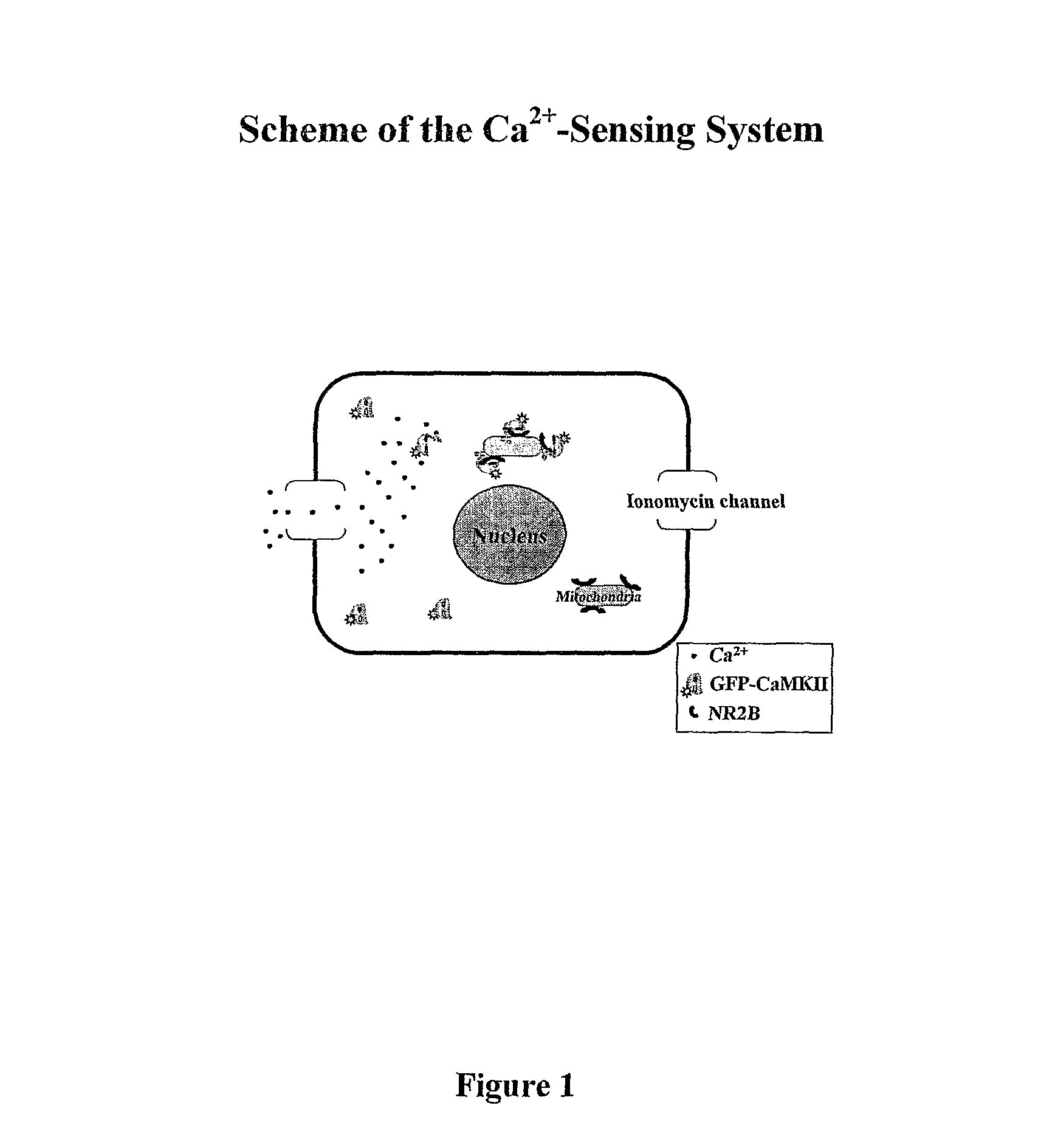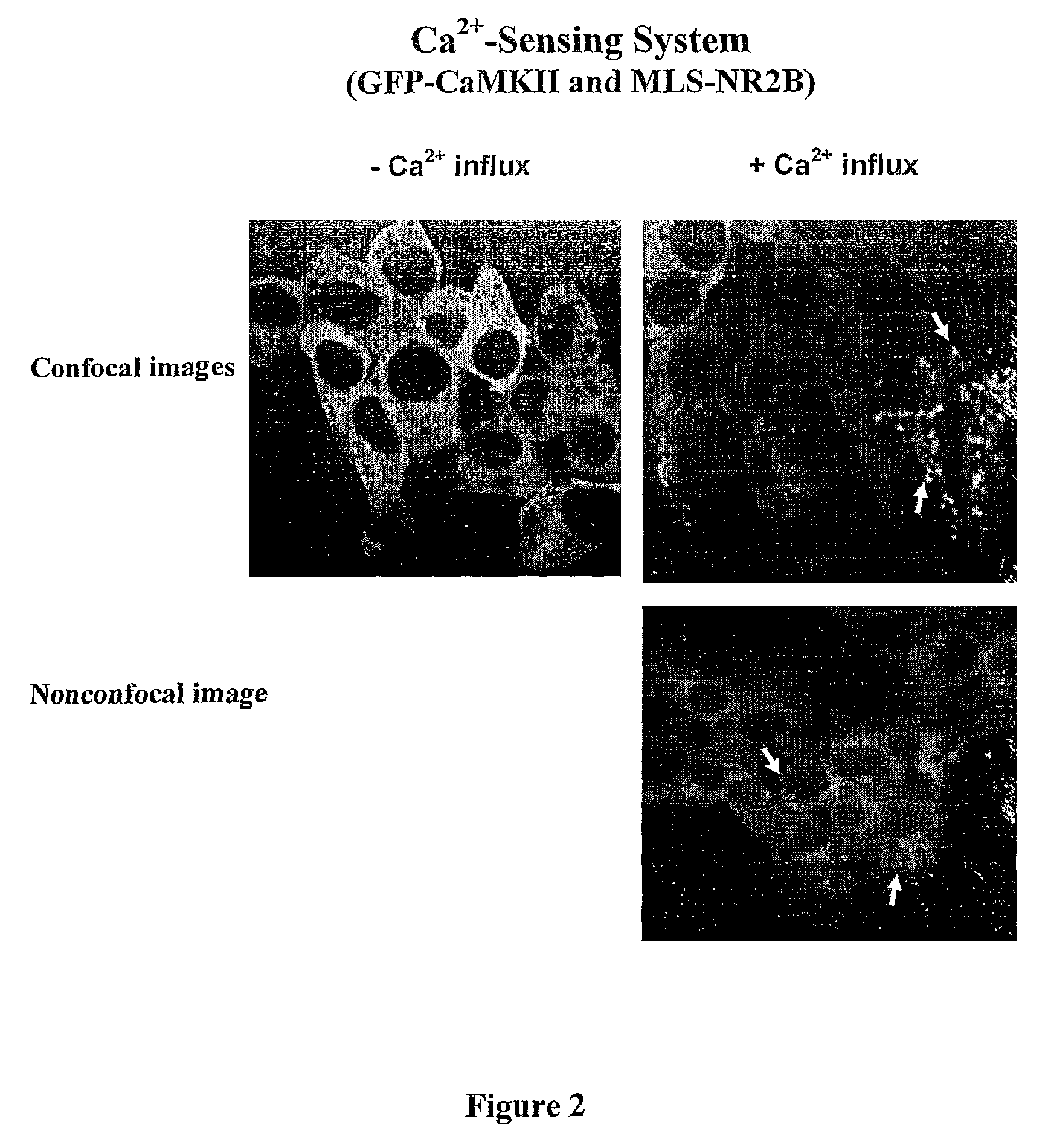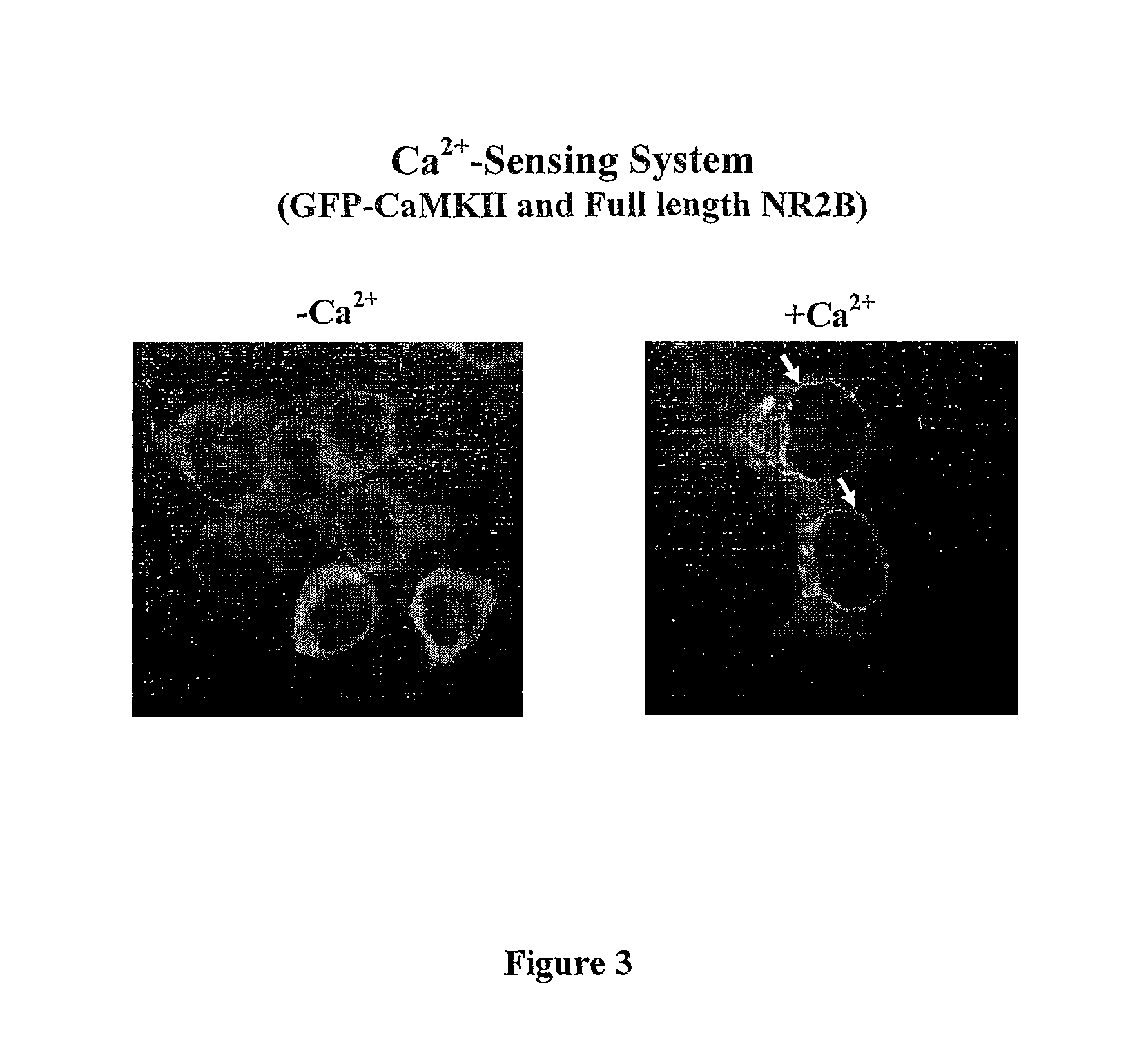Assay for detection of transient intracellular CA2+
a technology of intracellular ca2+ and detection method, which is applied in the direction of transferases, instruments, peptides, etc., can solve the problems of limiting the choice of equipment, imposing rapid liquid dispensing, and using more expensive equipment, so as to avoid the need for real-time measurements of live cells
- Summary
- Abstract
- Description
- Claims
- Application Information
AI Technical Summary
Benefits of technology
Problems solved by technology
Method used
Image
Examples
Embodiment Construction
[0019]The present invention relates to an assay for detecting intracellular binding between two proteins. The assay is useful for detecting intracellular release of free Ca2+. In this assay method the transient Ca2+ signal is captured by an irreversible protein-protein interaction so that the signal is converted into a form that can be preserved for days to even months. There is absolutely no requirement of any real time signal acquisition or live cell signal acquisition.
[0020]Increase in concentration of intracellular free Ca2+ ions is a widely used signaling mechanism under various physiological conditions. Release of free Ca2+ ions inside the cell happens either through plasma membrane channel proteins that allow Ca2+ influx or by release from intracellular Ca2+ stores. Since Ca2+ release thus becomes the activity of a wide variety of proteins, methods for detection and measurement of intracellular free Ca2+ are used as assays for many proteins that are potential drug targets. Th...
PUM
| Property | Measurement | Unit |
|---|---|---|
| concentration | aaaaa | aaaaa |
| fluorescent | aaaaa | aaaaa |
| fluorescence | aaaaa | aaaaa |
Abstract
Description
Claims
Application Information
 Login to View More
Login to View More - R&D
- Intellectual Property
- Life Sciences
- Materials
- Tech Scout
- Unparalleled Data Quality
- Higher Quality Content
- 60% Fewer Hallucinations
Browse by: Latest US Patents, China's latest patents, Technical Efficacy Thesaurus, Application Domain, Technology Topic, Popular Technical Reports.
© 2025 PatSnap. All rights reserved.Legal|Privacy policy|Modern Slavery Act Transparency Statement|Sitemap|About US| Contact US: help@patsnap.com



